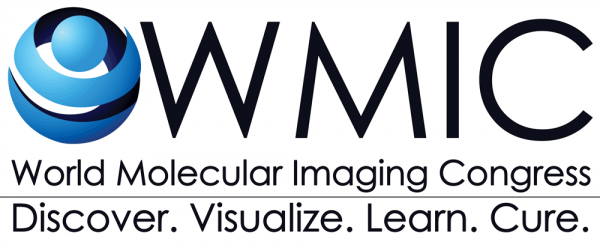Blood-Brain Barrier-Permeated Nanocomposites for Theranostic Molecular Imaging in Brain Tumor
Chia-Hao Su, Kaohsiung Chang Gung Memorial Hospital
Gliomas are the most aggressive and common intracranial tumors of the brain tumors and currently no better therapeutic methods can cure them. The survival periods of patients with gliomas are less than 15 months even after treatment of surgical excision or chemo-radiation therapy.[1] Many therapeutic agents are found that they can kill glioma cells effectively in vitro, but can not affect glioma cells in vivo due to the poor solubility and short half-life of therapeutic agents in the circulation. These critical obstacles can be overcomed by combining drug delivery of nanocarriers and targeting therapy. The drug-nanoparticle complexes can prolong blood circulation and enhance the local concentration of drugs in tumor region.[2] However, the physiological structure of blood-brain barrier (BBB) is the main hindrance to effectively treat brain-related disease by non-invasively therapeutic strategies because of BBB regulates the passage of only necessary substrates from blood circulation to brain tissues.[3] BBB provides a natural shield for brain against the invasion of various toxins and infected cells from circulating blood, so BBB also limits the brain uptake of diagnostic and therapeutic agents resulting in lower therapeutic efficiency.[4] Many methods have been used to nonspecifically disrupt the BBB to allow therapeutic agents entrance into brain, but these methods may allow circulating toxins from blood to get into the brain.[3] Thus, searching for safe and effective platforms that can delivery therapeutic drugs across the BBB to specifically kill glioma cells is under extensive and urgent investigation.
Herein, we developed the biocompatible and BBB-permeated nanocomposites that were composed of paramagnetic iron oxide (Fe3O4) nanoparticles and biodegradable polymer (alginate; alg) as an nanocarrier for anticancer drug (doxorubicin; Dox) in brain cancer therapy. Furthermore, the alg-Fe3O4 NPs were conjugated with BBB-permeated G23 peptides that were able to increase the penetration of BBB for brain tumor treatment (shown in Scheme 1).
As the results, we present this proof of concept that that G23 peptide-conjugated nanocomposites (G23-alg-Fe3O4 NPs) could cross the BBB successfully and enter the inside of brain tissue in the magnetic resonance imaging and immunohistochemistry (IHC). In addition, the in vitro and in vivo assays of brain cancer therapies also show significantly therapeutic efficiency when the C6 brain cancer cells (rat glioma) were treated with doxorubicin (Dox)-encapsulated nanocomposites (Dox/G23-alg-Fe3O4 NPs). These nanocomposites could be potentially used as a theranostic platform in brain-related diseases.
Reference:
[1] J. T. Huse, E. C. Holland, Nat. Rev. Cancer 2010, 10, 319-331.
[2] I. van Rooy, S. Cakir-Tascioglu, et al., Pharm. Res. 2011, 28, 456-471.
[3] E. A. Neuwelt, et al., Nat. Rev. Neurosci. 2011, 12, 169-182.
[4] R. Cecchelli, et al., Nat. Rev. Drug Discovery 2007, 6, 650-661.
